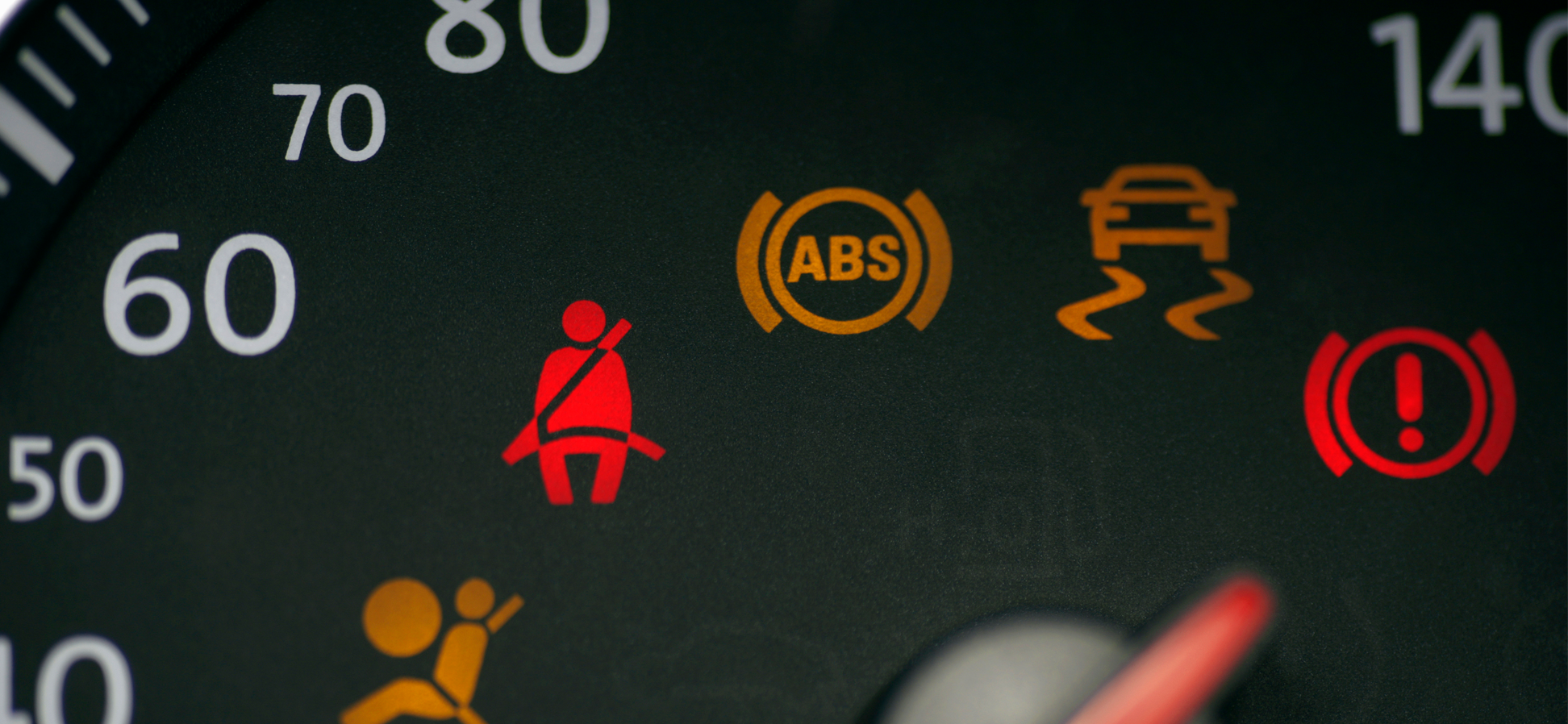Have you ever seen a dashboard light come on in your car and have no idea what it means? Well, school is in session! Here is a list of some of the most common indicator lights and what they mean, courtesy of SpotHero.
Check Engine Light

The check engine light is often red and is shaped like an engine. This light is connected to the car’s emissions system and motor and indicates that something in it is not functioning as it should. If you see this light up while driving, remain calm. It could be a serious problem, or it could be as simple as a wire being loose! To find out what is happening, get an On-Board Diagnostic (OBD) scan. A mechanic can run one in a few minutes and typically find the source of the issue.
Wiper Fluid

It’s raining! Well, no it’s not, but this dash light does look a bit like rain on a windshield. If this light is on, it means you are low on wiper fluid to clean the windshield. Top it off with new fluid before you run out to avoid a dirty windshield!
Tire Pressure Monitor

Wondering what that little exclamation point in a bowl is trying to tell you? That’s the tire pressure alert! Don’t be alarmed, this doesn’t necessarily mean you have a leaky tire. Tire pressure can fluctuate depending on temperature and altitude, with colder temperatures causing the pressure to drop. If this light is on, check your pressure at your first opportunity. Newer car models often have a digital readout of your current pressure somewhere on your dashboard, but you can also check this at most gas stations.
Not sure what your tire pressure should be? The ideal tire pressure for a sedan is between 32 and 35 parts per square inch (PSI), SUVs should aim for 40 to 42 PSI, and pickup trucks have the highest for personal vehicles with between 50 and 60 PSI. If the pressure on one or more of your tires is low for your vehicle size, add air to them as soon as possible. Once you have reinflated the tires, this alert should turn off after a few minutes.
Traction Control

Do you see what looks like a car going down a winding road? That means your traction control is engaged! This system kicks on if the vehicle detects slippery road conditions, such as during heavy rain, snow, or icy roads, to keep the vehicle stable. Don’t be alarmed if this light comes on, it means that the system is working to prevent your car from sliding on the road. No action is required from you, but best to be alert and drive extra carefully! When the conditions have passed, the light will turn off on its own.
Brake System Warning Light

You may have noticed this exclamation point in a circle before. This is the brake system warning light. If this light comes on, the first thing you should do is check to see if you’ve left your parking brake on. If the parking brake is not the culprit, then get your brakes checked at your earliest convenience; there could be a problem with your brake system, but don’t panic! Often this alert means it is time to replace your brake pads or top off your brake fluid.
Oil Pressure Warning

This is usually a red color and is shaped like an old-fashioned oil lamp. Often this light means it’s time to top off your oil, but it can also mean that there is a more serious problem like an oil leak. The easiest way to tell is to top off your oil at your next opportunity. If adding oil to the car turns the light off, then you’re good to go! If the light is still on, you should get your car checked out as soon as possible; leaving an oil pressure issue unchecked will only make it worse!
Drive safe!
